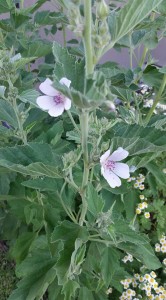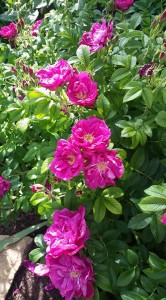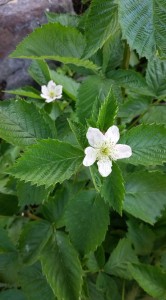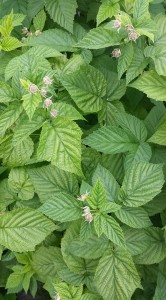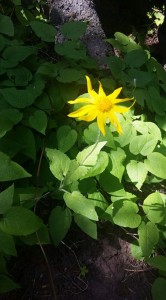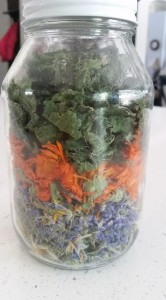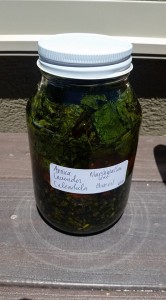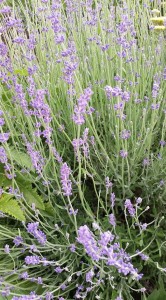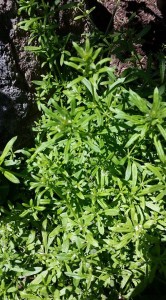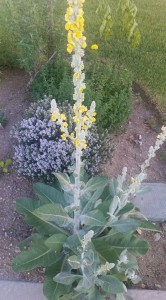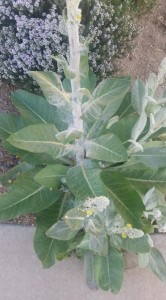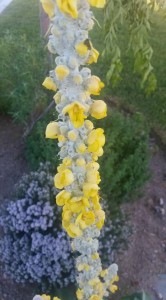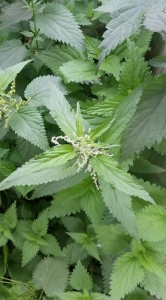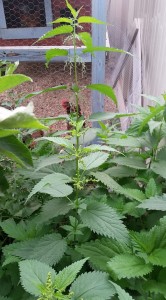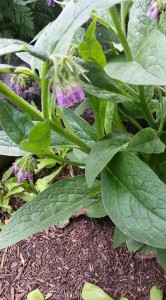Medicinal Herb Post #14 written June 14, 2018
Marshmallow – Althaea officinalis
Here’s another herb that has been around and used for so long it has that officinalis name in it, meaning it was studied and used hundreds of years ago in the Monk’s officine (or office) as medicine. Other herbs that share the same medicinal qualities but not as strong are common mallow, hollyhock and Rose of Sharon. This perennial can tolerate full sun or partial shade. However it will naturally grow near damp areas. It reseeds itself happily so it can spread. I will let the new plants grow big enough to use and then yank them out of the ground and dry for later use. It’s leaves are very soft indicating one of its amazing properties… to soothe upset tissues. It has the same properties and uses as the over used Slippery Elm tree grown back east.
This herb is seriously really cool! The leaf, flower and especially the root contain loads of mucilage or to put it more crudely, plant snot. The roots large sugar molecules swell up when added to water, creating a sweet mucilaginous gel. Cold infusion is best. It is an excellent herb for just about everything, from respiratory issues like dry coughs to digestive problems like ulcers and inflamed bowels, dry or irritated skin and urinary infections. Dr. Patrick Jones, the herbalist I’ve learned a lot from has used it to stop the progression of gangrene. It acts like grandma when she comes over to care for your every need when you’re sick on your death bed. She just calms everyone down and let’s them know they don’t have to die today. Marshmallow is also known for its ability to make mother’s milk more rich and wholesome.
You could honestly use this herb in any formula you conjured up in your mind. I use it in my skin salve, and in all digestive, respiratory and urinary formulas. Here are a few I like either in tincture, tea or capsule form:
Digestive calm- equal parts Marshmallow, Plantain and Bentonite clay.
Respiratory cough – Mullein, Marshmallow, Licorice, Elacampane
Urinary infection – Cranberry, Chamomile, Marshmallow, Uva Ursi
There are so many possibilities!

